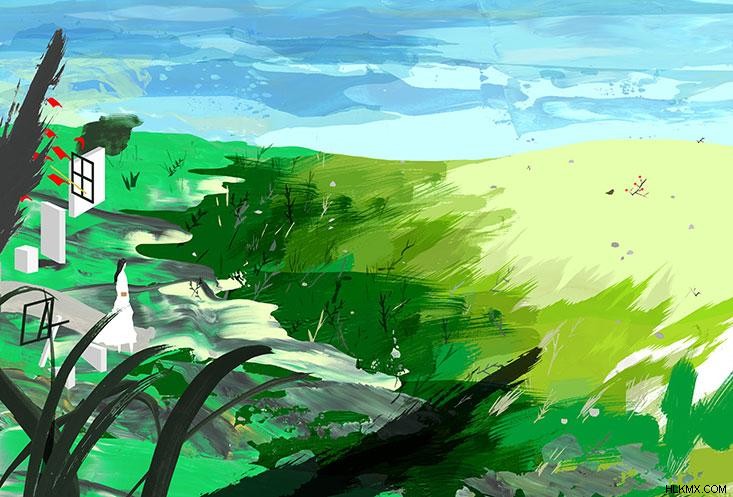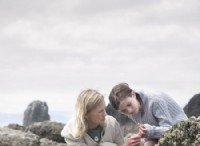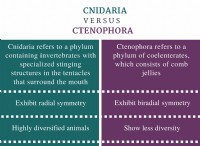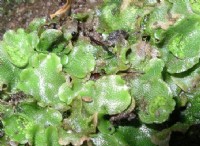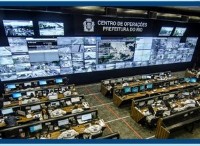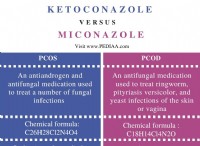Costco의 주차 공간은 특히 넓고 Veronica가 이제 열린 정박으로 조심스럽게 변하는 거대한 포드 여행과 같은 차량을 수용 할 수 있습니다. 그녀는 다른 포드 여행의 왼쪽에있는 자리를 골랐다. 사실, 그것은 우리의 임대와 정확히 동일하게 보이므로 점차적으로 제자리에 고정되는 동안, 나는 반드시 착색 된 창문을 가로 질러 미끄러지는 우리 자신의 착색 된 창의 반사를 보게됩니다. 무한한 회귀 반사의 멍청이에 순간적으로 가라 앉았을 때, 나는이 정확한 차량의 쌍이 내 아내의 이상하게 강력한 엔의 결과로 반쯤 일관되게 희망을 느끼고 있습니다. 대안은 여기에 너무 많은 일치 여행이 있기 때문에이 사건이 그다지 가능성이 낮지 않을 것입니다.
트윈 SUV 사이의 좁은 통로를지나 가면서, 나는 햇볕에 맹목적으로 깜박이는 차량 후면 엔드의 뒤집힌 평행 한 행을 피하기 위해 나옵니다. 로트가 여전히 비어있는 거리에서, 아스팔트의 사바나는 체인 링크 울타리로 둘러싸여 있고,지면은 하향 경사로 향합니다. 고속도로가 아래에 있습니다 (여기서서들을 수 있습니다. 여기에서들을 수 있습니다. 고속도로의 계곡을 가로 질러 먼 반대 해안에서 노란 기계는 곤충처럼 움직여서 철 붉은 지구에서 신선한 언덕을 조각합니다.
."그 특징인가요?" 묻습니다. 베로니카는 방금 우리의 운전에서 이것에 대해 말했습니다. 올바른 문구를 찾는 것으로 유명한 회사는 당신을 사랑합니다… Terra-Cotta 풍경의 한쪽 가장자리에서, 갓 완성 된 주택의 줄은 흰색과 옅은 노란색, 이상하게 깨끗합니다. 두 가지 모델이 있습니다.
내가 이미 다른 방향으로 향하고있는 베로니카를 따라 잡을 때 코스트코를 향해 그녀는 걸을 때 읽고, 우리가 현장 코스를 위해 구매하려고하는 100 개 정도의 품목 목록을 연구하고 있습니다. 이것은 우리가 샌디에고에서 24 시간 동안 코르테즈 바다의 원격 연구소에서 3 주 동안 필요한 모든 것을 모으기 위해 기어링 데이 (샌디에고에서 24 시간)라고 부르는 날입니다. 그리고 우리가 과거의 기어링 패턴에 충실한다면, 베로니카는 효율성과 질서의 힘이 될 것이며, 나는 내 입장에서 대부분 방해가되지 않을 것입니다. 물류가 저의 강한 소송이 아니었다는 것은 조용히 인정하는 진실입니다.
"응급 처치 상자를 확인 했습니까?" 베로니카는 그녀의 목록을 찾지 않고 묻습니다.
“내가 했어요.”나는 거짓말을했다.
그녀는 길고 텔레 스코프가 많은 순위 중 하나에서 한 쌍의 대형 쇼핑 카트를 덜 쥐면서“두 명 더!” 우리 각자는 페이로드를 두 배로 늘려야 할 때까지 무너진 쌍을 밀어 낼 것입니다.
창고 내부에서, 우리는 즉시 3 개의 스크린을 쌓아 올린 일련의 텔레비전으로 인사합니다. 그들은 모두 같은 애니메이션 영화를 보여주고 있으며, 그들의 빛나는 이미지는 캔 캔 댄서의 웃는 라인처럼 완벽한 동기로 움직입니다. 우리가 줄을 따라 걸을 때, 나는 눈을 피하고 실제 통로 앞에있는 특별한 제안의 저지대 군도로 만들 때까지 발을 응시합니다. 베로니카는 우리가 필요로하는 옆에있는 스낵바의 배가 상자를 끌어 당겨 옵션을 검사하기 시작합니다. 60 파워 바; 48 루나 바; 120 Chewy Granola 바.
“베로니카”, 나는 바의 제방에 손을 대고“이것이 의미하는 바를 알고 있습니까?”
“아니요.”그녀는 부드럽게“무슨 뜻입니까?”라고 말합니다. 그녀는 그녀의 관심을 그녀의 목록으로 되돌려 놓았다.
“베로니카는 상업의 규모가 바뀌 었다는 것을 의미합니다. 도매는 현재 가정입니다.”
그녀는 반응하지 않습니다.
"그게 방해가되지 않습니까?"
그녀는 그녀의 목록을 바라 보면서“이것은”라고 말합니다. "그러나 우리는 4 백과 20 개의 스낵바가 필요합니다."
"그는 역겨운 일입니다."
“15 명, 하루에 2 개의 바, 14 일. 그것은 4 백 20 개의 바입니다.” 그녀가 카트에 세 상자의 균형 막대를 놓을 때, 나는 하나를 꺼내서 제방에 다시 넣습니다. “이것들은 변장의 twix입니다.”라고 말합니다.
“Twix를 좋아하는 사람들”그녀는 대답하여 상자를 다시 넣습니다.

실제 통로는 30 피트의 천장에 도달하기 위해 기계에 의해 쌓인 팰릿 화재를 통해 조각 된 U 자형 협곡입니다. 우리가 꾸준히 따라 움직일 때, 우리의 눈은 협곡 벽을 지나서 필요한 친숙한 품목을 스캔합니다. 특정 제품은 예상되는 비율에 대한 개그 인 시각적 농담처럼 보이는 양으로 판매되며 재미를 위해 선반에서 그러한 소품을 꺼냅니다. 300 개가 들어있는 쓰레기통 크기의 욕조입니다. 따라서 라벨은 외칩니다.
"이거 필요 했어?" 나는 두 손으로 그것을 잡고 묻습니다.
"그렇습니다." 그녀는 나에게서 가져 와서 내 카트에 넣습니다.
“어서.”나는 그것을 꺼내었다.
“영화의 밤”그녀는 내 손목을 장바구니에 다시 눌러 대답합니다.
다음 통로의 중간에는 주황색 블록으로 구성된 허리 높이의 큐브가 있으며, 각각은 72 개의 개별적으로 포장 된 체다 크래커 및 피부 버터 샌드위치 패키지로 구성되어 있습니다. 현기증이 나는 전기 오렌지 프랙탈이며 아이디어를 제공합니다. 가능한 한 우연히 오렌지 블록을 집어 베로니카의 카트에 넣고“좋은 간식”이라고 말합니다. 그런 다음 그녀가 카트에 새 항목을 쳐다 보면서 참을성있게 기다릴 준비를하면서, 그녀가 내 제안을 받아들이 자마자, 나는 그녀의 혼란스러운 소비주의를 입증하고, 그녀는 빨간 감초를 더 잘 돌려 놓을 것입니다.
."당신은 미쳤습니까?" 그녀는 묻고 즉시 분명합니다. 제 전술은 역효과를 냈습니다. 그녀는 카트에서 오렌지 블록을 가져 와서 다시 눌렀습니다. "포장지는 어디에서나 끝날 것입니다!" 인내심을 잃어버린 그녀는 내 자신의 사명이 필요하다고 말합니다. 그녀는 나머지 음식을 모으고 약국을 방문해야합니다. 우리의 첫 번째 고용 상자에서 누락 된 것을 알고 있기 때문입니다.
.약국… HDTV의 사이렌 송에 의해 길을 잃지 않고 더 나쁘게 도달하려는 나의 유일한 희망은 트랜스 펙트를 걸어가는 것입니다. 그래서 창고의 한쪽 가장자리부터 시작하여 행진하면서 시선이 똑바로 고정되었습니다. 내 왼쪽으로, 얼어 붙은 고기의 유리 케이스는 베이지 색 피 흐림으로 지나가고 오른쪽에 통로의 개구부는 내 눈의 모퉁이에 번쩍입니다. 그러나 내가 빵집을 따라 걸을 때, 독특한 유리 도넛의 독특한 향기로 갑자기 회색 깜박임이 내 개인 터널의 측벽을 뚫습니다.
그것은 하우스 핀치입니다 :빨간 머리를 가진 작은 갈색 회색 새, 즉 그가 남성임을 의미합니다. 매끄러운 시멘트 바닥에서, 그는 한 번 펙을하고, 머리를 기울이고 땅을 관찰하고 다시 펙을 멈 춥니 다. 움직임은 빠르고 정확하며 한 번에 기계적이며 생생하게 살아 있습니다. 그는 테이블로 날아가 플라스틱 쓰레기통의 가장자리에 자리 잡고 작은 눈으로 나를 고정시킨다.
사람들은 그와 가까이지나 가면서 전화기에서 이야기하고 머핀 아파트를 위해 쓰레기통에 손을 뻗지 만 마음에 들지 않는 것 같습니다. 그는 자신이있는 곳에 바로 머무르고 내 눈을 계속 훈련시킵니다. 분명히, 그것은 다른 사람들이 아니라 의심스러운 것은 내 자신의 행동입니다. 그는 빠르고 짜증을 낸 180을 바라며 다른 눈으로 나를 고칠 수 있습니다. 관심있는 이유는 무엇입니까? 그는 묻는 것 같습니다. 왜 갑자기 관심사?
하우스 핀치, 카르 포다 쿠스 멕시코 누스 이기 때문에 붉은 머리를 가진 작은 갈색 새를 보았을 것입니다. , 조류의 특별한 필요, 먹이를 먹을 수있는 식물, 둥지 장소 - 인간이 생성하는 경향이있는 일종의 서식지와 정확하게 일치하도록하든. 우리는 레드 우드 숲이나 소금 평평한 거의 모든 풍경을 변환합니다. 이탄 늪 또는 모래 사막 - 잡초와 잔디의 패치 워크가 좋아하는 씨앗과 함께 집 핀치를 제공합니다. 그리고 둥지에 관해서는 작은 새들은 튼튼한 장식용 나무, 주차 구조물의 돌출부 및 벽에서 자라는 담쟁이를 좋아하는 것처럼 보입니다.
1950 년대 후반까지, 하우스 핀치는 주로 미국의 중심을 덮고있는 광대 한 초원에 의해 미국 남서부 3 분의 1에 묻혔다. 이 지역은 많은 씨앗을 제공했지만 둥지 부위가 크게 부족했습니다. 생태 역사에 대한 관대 한 추측은 Finches가 점차 동쪽으로 뛰어 다니면서 중서부 교외의 약속의 땅에 도달 할 때까지 인간 정착지의 섬에서 열광적으로 동쪽으로 뛰어 다니고 있음을 시사 할 수 있습니다. 그러나 그것은 실제로 그것이 어떻게 일어 났는지는 아닙니다. 대신, 침략이 마침내 발생했을 때, 그것은 후면에서 나왔습니다 : carpodacus mexicanus의 소수 인구 뉴욕 롱 아일랜드에 출연했으며 그곳에서 그들은 서쪽으로 꾸준히 3 월을 시작했습니다. 그들이 약 10 년 후 대평원에 도착했을 때, 그들은 서쪽에서 할 수있는 것보다 더 쉽게 동쪽에서 교차 할 수 없었습니다.
.하지만 왜 롱 아일랜드인가? 작지만 순간적인 무리가 뉴욕시 옆에 어떻게 발견 되었습니까? 산불을 시작하는 불꽃과 같은 생물학적 침입의 씨앗은 종종 그들이 시작하는 과정에 의해 가려져 종종 가려집니다. 침략자가 통지를 얻기에 충분히 발전 할 때까지 상당히 넓은 지역의 생태학을 바꾸었고, 정확히 expansion의 반지가 진원지를 가졌던 곳은 재건 할 수 없습니다. 그러나 새들은 독창적 인 사랑하는 동물이며, 확산이지만 강박 적으로 경계하는 관찰자들의 전국적인 연합에 의해 모니터링됩니다. 다른 유기체와 마찬가지로 조류가 눈에 띄게 나타납니다.
이 특별한 경우, 1941 년 4 월 뉴욕 나소 카운티에서 붉은 머리 핀치가 발견되었으며, 목격은 Nassau Daily Review-Star의 주간 조류학 칼럼에서 정식으로보고되었습니다. 보고서를 제출 한 애호가들은 그들의 목격이 알려진 종의 알려진 범위에 대한 예외를 대표한다는 것을 잘 알고 있었지만, 새를
브루클린의 Edward Fleisher 박사는 Linnaean News-Letter 의 가입자가되었습니다. 엘리엇의 기사를 읽었을 때 그는 즉시 그에게 편지를 썼습니다. 그는 1940 년 1 월에 브루클린 애완 동물 가게에 들어갔다. 그곳에서 그의 관심은 할리우드 핀치 (Hollywood Finches)라는 새장에 끌렸다. 그의 실망에, 새장의 20 마리의 새들은 실제로 카르 포다 쿠스 멕시코 누스의 표본이었다 . 엘리엇은 나중에 그 당시의 운명적인 결의안을 설명했듯이“Dr. Fleischer는 이전 에이 같은 상점에서 보헤미안 왁스 윙스를 판매하는 것을 보았고 보호 된 미국 통행지 에서이 트래픽을 종식하기로 결정했습니다.”
Fleischer는 National Audubon Society에 즉각적인 조치를 요청했지만 그러한 문제를 담당하는 경찰관이 휴가 중이었기 때문에이 사건은 State Game Protector에 회부되었습니다. 간단한 조사 후,이 공식은 Fleischer에게 새들이 캘리포니아의 공급 업체에서 왔다고 알렸으므로 Carpodacus mexicanus 와 같이 판매는 불법이 아니 었습니다. “캘리포니아에서 보호받지 못하거나 뉴욕 주 출신이 아닙니다.”
불만족스럽지 않은 Fleischer는 생물학적 조사국과 협의하여 미국과 멕시코가 최근 철새에 관한 조약에 상장했기 때문에 하원 핀치가 실제로 보호되었다고 알렸다. 설문 조사는 또한 게임 관리 에이전트 인 Orin D. Steele을 파견하여 Fleischer에게 개인 방문을 지불하고 그 문제를보다 완전하게 논의했습니다. Fleischer는 나중에이 에피소드의 결론을 설명했듯이“1940 년 4 월 1 일, Steele 씨는``여러분이 제공 한 정보를 바탕으로 캘리포니아에서 포획과 교통을 중단 할 수 있었고, 미국 전역의 판매를 중단 할 수있었습니다. '”
이시기에 Fleischer의 행동에 의해 지루한 Audubon Society는 자신의 팀을 뉴욕 지역 애완 동물 상점으로 보냈습니다. 그들이 발견 한 새장은 카르 포다 쿠스 멕시코 누스의 비어 있음을 발견했다 . 비밀 요원이 하우스 핀치 인수에 관심을 표명했을 때, 그는 법적 문제가 있었지만 적절한 가격에 대해서는 여전히 일부를 얻을 수는 있지만 멕시코와의 특정 조약에 상장되지 않은 자주색 핀치로 판매해야 할 수도 있습니다.
브루클린의 에드워드 플라이 셔 박사의 합당한 노력은 보호 된 미국 통행인의 대륙 횡단 선적에 깊은 움푹 들어간 곳을 두었을뿐만 아니라 걱정스러운 애완 동물 상점 소유자가 카르고다 쿠스 멕시코 누스의 무리를 석방하도록 촉구 한 것으로 보인다. N.Y. Long Island 근처에서-예기치 않게 광범위하고 오래 지속되는 잔향을 가질 수있는 생태 학적 실험.
이야기에서 그 작은 불일치 (새들이 캘리포니아에서왔다면 왜 덴버의 아종과 같이 어두운 이유는 무엇입니까? 몇 년 후 미국 자연사 박물관의 큐레이터가 그의 표본 중 하나를 씻고 실제로 창백하다는 것을 발견했을 때 해결되었습니다. 뉴욕의 삶은 집 핀치를 그렸습니다.
결국, 베로니카는 머핀 빈으로 나를 발견하여 부스러기에 대한 작은 새 사료를보고 있습니다.
“아, 맞아요.”그녀의 목소리는 내 뒤에 말했다.“당신은 빵집에 가서 새들을 찾아야했다.”
처음에 나는 다음과 같이 설명하려고 노력했다. 왜 관심사? 새가 묻는 것처럼 보였지만 물론 그의 질문이 아니라 -
"약국?" 베로니카는 말했다. 그리고 다음 시간 동안 나는 하우스 핀치에 관한 모든 것을 잊었다. 그러나 나중에, 브레이크 라이트의 파도를 전파하는 것을 쳐다 보면서 오후 5시 I-5-또는 지루함에서, 우리가 붉은 감초의 욕조에서 우리는 앞 유리 아래에서 쐐기를 was습니다. 왜냐하면 우리는 앞 유리 아래에서 쐐기를 뿌렸습니다. 왜냐하면 그것은 다른 완벽한 포장의 나머지를 입증했기 때문에, 나는 새를 다시 생각했고, 그 질문에 대해 다시 생각했고, 코스트코를 원하지 않는 분리의 소용돌이로 취급하는 이유는 무엇입니까? 또는 솔직히 말해서, 더 많은 기소로 말하면 :왜 새들로 가득 찬 숲에 가져올 같은 호기심으로 코스트코에 들어갈 수 없습니까? 예를 들어, 선반에서 제품을 선택하고 기원과 디자인, 제조의 도전, 또는 광범위한 매력의 의미를 이해하려고 할 수없는 이유는 무엇입니까?
베로니카는 내일의 국경 교차와의 합병증을 해결하면서 전화를 걸어 운전의 무감각 한 리듬에 정착하여 Costco를 혼자서 퍼즐로 시작했습니다. 진짜 차이가 있었습니까? 조류의 숲보다 조사가 덜 보람있는 물건의 창고를 만든 비판적인 구별? 저에게 처음 발생한 것은 Costco가 일종의 FoodWeb으로 간주되면 수천 개의 제품이 단일 최고 소비자에게 바로 이동하면서 과감한 단순화를 보여주기 때문에 생태학에있어서 차이가있을 수 있다는 것입니다. 대조적으로, 산림의 생태 네트워크는 망상 및 통합되어 있으며 각 유기체는 다른 유기체에 영향을 미칩니다. 아마도 Costco는 숲이 전체적이고 일관된 느낌을주는 이유 일 것입니다. Costco는 당신에게 단편화 된 원심 분리 느낌을 제공합니다.
그럼에도 불구하고 문자 그대로 조금 덜 생각한다면 생태 링크가 나타나기 시작하여 창고 전체에 걸쳐 추적합니다. 확실히 생태 경쟁 (Powerbar vs Luna)과 공생 (DVD 및 레드 감초)과 같은 것이 있습니다. 예를 들어 바르비 인형과 런닝 머신 (예 :바비 인형과 런닝 머신) 사이의 문화적 또는 상징적 관계를 분별하는 데 관심이 있다면, 창고의 생태 네트워크는 햇볕에 거미줄처럼 밝아 질 것입니다. 마지막으로, Costco가 실제 생태가 부족하다는 것을 암시하는 것은 역사의 요점을 무시하는 것입니다. Charles Darwin 자신을 포함한 초기 생태 사상가들은 Adam Smith의 자유 시장 이론에서 가장 유익한 은유를 발견했습니다. 다윈이 생태계를 경제로 보았다면 은유를 뒤집을 수 있어야합니다.
그러므로 생태학은 내가 그 뒤에 의미있는 차이를 제공하지 않을 것입니다. 그러나 내가 시도한 다른 모든 차이점 (변호 대, 설계, 자연 대 자연 대 제조)은 창고를 향한 내 배치를 입증하기 위해 건전하게 유래했습니다. 그 시점에서, 나는 조사가 자신에게 틀림없이 시점에 대한 단서를 꾸준히 모으는 형사처럼 느끼기 시작했습니다. 숲보다 코스트코가 덜 흥미롭게 만든 것은 코스트코 나 숲이 아니라 나.
하지만 내 문제는 무엇입니까? 코스트코에 대해 흥분 할 수없는 이유는 무엇입니까?
아마도 무지. 내가 공학, 아마도 경제학 또는 경제학을 조금 더 알고 있다면 확실히 Costco에 진정한 초점과 관심을 가지고 접근 할 수 있습니다. 예를 들어, 이탈리아 화학자이자 작가 프리모 레비 (Primo Levi)가 평범한 캔 안에서 찾을 수있는 것을 기억했다 :분자 친화력의 미니 드라마; 전문적인 성공 또는 실패의 증류; 후손에게 선물 또는 화학자의 무능력을 추악한 상기시켜줍니다. 그러면 그가 합성 감초의 양동이로 무엇을했는지 상상해보십시오.
5 마일의 트래픽으로, 나는 Mea Culpa에 대해 매우 만족감을 느꼈습니다. Costco는 진정으로 매력적일 수 있습니다. 만약 내가 매혹적인 방식으로 제조 된 세계를 읽을 수있는 Levi와 같은 작가의 예를 따르려면 진정으로 매력적일 수 있습니다. 하지만 새로운 결의를 잘 만들기 전에 신맛이났습니다.
거리 표지판이 그것과 관련이 있었기 때문에 정확히 어디에서 일어 났는지 기억합니다. 우리는 방금 고속도로를 빠져 나갔고 이제는 광대 한 주거 개발에 들어갔고, 일부 친구들은 기어링 데이베이스 캠프로 집을 관대하게 제공했습니다. 나는 베로니카가 전화에서 내려서 어디로 돌릴지를 상기시키기를 바랍니다. 물론, 나는 친구의 집으로 여러 번 운전했지만, 방향 감각은 매우 나쁘다. 이것은 집들이 모두 동일하고, 블록이 자립적 인 곳인 이웃을 만드는 이웃을 만들어내는 이웃을 만들어냅니다. 그날 아침, 사실, 짧은 심부름에서 돌아와서, 나는 무의식적으로 이웃의 진입로에 주차했고 그의 집에 멍청하게 걸어 갔다.
그 사건 이후, 나는 5 자리 거리 주소를 암기했지만 지금은 코스트코 문제에 관여하면서 턴을 놓쳤거나 어쨌든 그렇게 생각했습니다. 베로니카는 그녀의 대화에 몰두했기 때문에 나는 바퀴 위로 앞으로 나아가면서 지리적 큐를 무기력하게 찾고있었습니다. 비이성적으로, 나는 속도를 냈다가 다음 코너에서 트럭을 휘젓고 녹색 거리 표지판을 바라 보았다.
록 릿지, 하나가 말했다.
타마 락, 다른 사람이 말했다.
그리고 그 순간, 나는 최근 결의안을 거부했습니다.
우리 각자는 직접 경험을 통해 코스트코가 점점 더 광범위한 환경의 일부라는 것을 알고 있습니다. 쇼핑몰, 주차장 및 주거용 스프롤의 신경총은 이제 모든 미국 도시 주변에서 수백 마일 동안 연장됩니다. 많은 곳에서는 실제로 도시입니다. 그것의 일관성은 광범위하고 정확합니다 :박스 상점과 선반의 상품; 식당과 접시의 음식; 주거 지역조차도 미국의 한 해안에서 다른 해안까지 놀라운 충실도로 복제되어 있습니다. 내가 잘못된 진입로로 들어갔을 때, 나는 앨버 커키 나 Schenectady에있을 수있었습니다.
암 조직의 은유는로드되지만, 특정 방식으로는 정확합니다. 암에서는 단일 품종의 세포가 빠르게 복제됩니다. 이들은 이상하게 균질 조직을 형성한다. 왜냐하면 분화, 즉 성숙하고 기능성 세포를 특징 짓는 독특한 특성의 발달은 비교적 느린 과정이며, 암 세포가 분화되기 전에 나누기 때문이다. 실제로, 차별화가 줄어들수록 더 빠르게 복제하는 경향이 있으며, 곧 다양한 유형의 잘 분화 된 조직을 침략하고 발전시키기 시작합니다.
생태계와 경제에서 (신체에서와 마찬가지로) 방해는 시간이 걸립니다. 남부 캘리포니아의 세이지 스크럽을 서호주와는 다른 생물학적 진화인지 또는 샌디에고 타코 상점을 메인 차우더 오두막집과 다르게 만드는 문화적 발전, 현지 차이의 축적은 당연한 속도로 발생합니다. 그러나 그 고정 관념이 쇼핑몰과 스프롤의 신경총이 움직일 때, 모든 단일 장소는 한 곳으로 향합니다.
Rock Ridge와 Tamarack의 모퉁이에서 나는 문제의 징후를 보았다. 개발자는 종종 개발 전에 그곳에 있었던 후 새로운 지역과 거리의 이름을 지정합니다. 예를 들어, 고향 인 볼더 바위 근처에는 콜로라도의 바위 (Boulder) 근처에 록 크릭 (Rock Creek)이라는 복제 된 타운 하우스 (Rock Creek)가 있으며, 어린 시절의 경험을 통해 한 번에 그 위치에 실제로 사랑스러운 개울이 있다는 것을 증언 할 수 있습니다. 마찬가지로, 샌디에고 북쪽의 언덕에 한 번은 실제적이고 특정한 록 릿지가 있었다고 생각합니다.
반면에 타마락은 한때 같은 언덕에 서있는 나무를 기념하지 않습니다. 타마 락은 추운 날씨 나무이기 때문에 그레이트 레이크 주변에서 자라며 북쪽으로 캐나다로 향합니다. 그러나 샌디에고의 거리 표지판은 실제로 미네소타의 어딘가에 특정 나무로 돌아갈 수 있습니다. 예를 들어, 개발자들은 때때로 여러 위치에 사실상 동일한 세분화를 구성했기 때문입니다. 아마도 타마락의 기본 범위 어딘가에있는 어딘가에 샌디에고의 한 쌍의 거리 표지판으로 표시된 코너가 있으며, 그곳에서만 타마 락이라는 단어는 이제 우뚝 솟은 나무의 사이트를 표시하는 반면 Rock Ridge는 수천 마일 떨어진 곳을 의미합니다. 그러한 중복이 실제로 존재하는지 여부에 관계없이, 그러한 이질적인 랜드 마크의 병치는 지리의 침식에 대한 간결한 증거로 나를 강타했다.
아마도 코스트코는 우리 자신을 몰입 할 수있는 다른 환경만큼이나 아름답게 매혹적이거나 놀라운 또는 심지어는 그 자체로도 마찬가지입니다. 적어도, 우리는 그렇게 할 관점을 찾을 수있었습니다. 그러나 내가 Tamarack과 Rock Ridge에서 모퉁이를 돌면서 친숙한 동네에서 길을 잃은 것을 발견 한 것은 그 관점을 찾으려고하지 않을 것이라는 것이 었습니다. 사실, 나는 우리가 지금 우리가 자아 텍스트의 많은 사본을 위해 고유 한 볼륨의 전체 라이브러리를 거래하는 과정에 있기 때문에 그것을 저항 할 것입니다. 그리고 교환은 어리석은 것이 아니라 비극적 인 것 같습니다.
매일 리뷰 스타 에 그의 칼럼 후 12 년 후 나소 카운티에서 하우스 핀치 (House Finches)를 발표 한 엘리엇은이 진단을 발표했다. 이 적응력 있고 다채로운 새는 미국 동부의 단단한 거주자 인 것으로 보입니다.” 현대의 생태 학자에게는 이국적인 종의 설립에 대한 기쁨이 끔찍하게 결백 해 보인다. 왜냐하면 우리는 생물학적 침략자들, 심지어 화려한 침략자들을 이해하게 되었기 때문이다. 처음에는 기본적으로 무해한 것처럼 보이는 사람들조차도, 종종 예상치 못한 생태 학적 결과로 이어집니다.
소수의 사례는 엘리엇의 따뜻한 환대가 현재의 외국인 혐오증에 어떻게 주어 졌는지를 보여줄 것입니다. 이 작은 샘플은 곧 현대의 역병과 스컬지의 작은 느낌이들 수 있지만, 나의 의도는 자연이 제공하는 나쁜 것들에 대한 직업과 같은 이해를 달성 할 때까지 우리를 깃발시키는 것이 아닙니다. 오히려이 샘플은 생물학적 침략이 무엇인지, 막을 수없는 행진이 어떻게 작동하는지, 아마도 그들이 샌디에고의 교외에서 고려한 다른 종류의 전선과 관련이있는 것에 대한 더 일반적인 질문에 대한 증거를 제공 할 것입니다.
암컷 갈색 머리 cowbird는 로빈보다 약간 작고 칙칙하고 조용합니다. 내가 그녀가 다른 새들의 무리로 잔디밭을 뛰어 다니는 것을 볼 때마다, 떠오르는 이미지는 어두운 스파이, 갈색 외투가 꽉 묶고, 시선을 묻고, 끊임없이 보이는 이미지입니다. 그녀가 찾고있는 것은 새가 둥지를 위해 나뭇 가지를 모으는 것입니다. 그리고 그녀가 그러한 활동을 보았을 때, 그녀는 기대하는 부모를 새 집으로 끌어 들이고 감시를 시작할 것입니다. 그런 다음 마크가 나오면 그녀는 들어 와서 자신의 알을 낳을 것입니다. 이미 계란이 생기면, 그녀는 한 식사를하면서 부모가 돌아 오면 둥지의 계란 수가 침입을 배신하지 않도록합니다.
변장에 대한이 마지막 노력은 나쁜 가짜 moustache와 같이 약간 터무니없는 것처럼 보입니다. 왜냐하면 Cowbird의 계란이 클러치의 나머지 부분과 몇 배 더 크고 크게 다른 색이 될 가능성이 있기 때문입니다. Cowbirds는 희생자가 미미한 Gnatcatchers에서 무거운 Meadowlarks에 이르기까지 다양한 희생자를 모방하는 알을 흉내낼 수 없습니다. 그럼에도 불구하고, 충분히 충분히, ruse는 일반적으로 효과가 있습니다. 부모는 마치 아무것도 잘못된 것처럼 마치 부적합을 배양하고, 부화 할 때, 그들은 형제 자매보다 더 많이 먹이를줍니다.
몇몇 새 종은 사기꾼을 포일하기에 충분히 통조림입니다. 예를 들어, 로빈스는 10 명 중 9 번의 카우 버드 계란을 겁니다. 여기에는 흥미로운 패턴이 있습니다. 10 명의 커플 중 무작위가 아닙니다. Cowbirds가 아직 침략하지 않은 특정 장소의 커플입니다. 따라서 변칙적 인 계란을 발견하려는 욕망은 카우 버드의 위험에 대한 반응으로 진화 한 정신적 특성으로 보입니다. 그리고 이것은 Cowbirds가 왜 그런 효과적인 침략자인지 설명하는 데 도움이됩니다. 그들이 새로운 어딘가에 착륙 할 때마다 현지인들은 그들에게 무방비 상태입니다. 결과적으로, 미국에 둥지를 둔 꽤 작은 새들은 현재 망각으로 들어가고 있습니다.
Cowbirds가 침입하는 방식에 대해 특히 괴상한 것이 있습니다. 작은 노란색 워 블러의 불가사의는 그들의 가건 투안 갈색 병아리에게 먹이를주기 위해 고군분투하지만 다른, 침략에 대한 그래픽 이야기도 유익 할 것입니다. 사막 남서쪽을 가로 질러 녹화 된 바늘이 달린 으스스한 나무 인 아시아 소금 삼나무는 원래 약간의 그늘을 제공하기 위해 심었습니다. 그러나 소금 삼나무는 인계하는 경향이있는 경향이 있습니다. 그들은 타의 추종을 불허하는 verve로 물을 빨고 토양에 소금을 뿌려 근처의 다른 모든 식물을 독살합니다. 침략적인 나무는 이제 사막의 사막의 모든 수로를 정복했으며, 한때 면화와 버드 나무의 다양한 숲은 이제 밀도가 높은 소금 삼나무입니다.
이제 미국 서부에 퍼지는 작은 잡초가있는 또 다른 침략자는 자체적으로 성가신 지구 전략을 배치합니다. Eurasian Cheatgrass는 무해하게 보입니다. 얇은 줄기는 날씬하고 괴물이 든 씨앗의 느슨한 무게로 우아하게 구부러집니다. 그러나 여름철에는 꽤 작은 깃털이 매우 가연성이되어 산불을 불러 일으 킵니다. 그리고 불꽃이 튀어 나오면 대부분의 식물 수명을 파괴하지만 치트 그라스 씨앗은 내화성입니다. 다음 봄에는 토양에서 싹이 트며 경쟁사의 재가 풍부합니다. Cheatgrass가 북아메리카에 도착한 이후 세기에 1 억 에이커를 담그 렸습니다.
보다 일반적인 용어로 문제를 생각하기 전에 몇 가지 예제입니다. 1955 년, 식민지 우간다 행정관이 세계에서 가장 큰 열대 호수 인 빅토리아 호수의 물에 나일 퍼치 양동이를 미끄러 뜨 렸습니다. 동 아프리카 어업 연구기구의 과학자들은 약탈적인 농어가 빅토리아 호수의 특별한 생물 다양성에 예상치 못한 영향을 미칠 수 있다는 것을 두려워하면서 그러한 움직임을 명시 적으로 금지했습니다. 처음에는 과학자들이 틀린 것처럼 보였습니다. 이국적인 포식자는 지역 인구를 확립했지만 아무것도 치명적이지 않았습니다. 그러나 70 년대 후반, 농어는 확산되기 시작했고, 향후 10 년 동안 그들은 세계에서 다른 곳에서 발견되지 않은 200 종의 물고기를 통해 길을 먹었습니다.
마지막으로, 우리의 litany는 우리에게 이국적이지 않은 침략자를 생략해서는 안되지만, 세계의 바다를 가로 질러 섬이 쥐, 생쥐, 토끼, 집 고양이, 염소, 돼지 및 기타 야생 가축에게 양보했습니다. 쥐와 고양이는 섬을 떠나는 새를 먹습니다. 토끼와 생쥐는 그렇지 않으면 토착 초식 동물을 먹일 토착 식물을 먹습니다. 염소와 돼지는 섬 전체를 denude합니다. 이 과정은 유럽인들이 처음으로 아 조레스, 마데이라, 카나리아에 도달했을 때 14 세기에 시작되었으며 그 이후로 계속되었습니다. 대체로, 이전에 고립 된 해양 제도에서 유럽 해충과 국내의 확산은 수십 종의 파충류와 포유류와 적어도 100 종의 조류를 소멸시켰다.
이제 우리의 침략자가 혼합 된 가방을 손에 들고, 우리는 더 일반적인 질문을 구걸하는 것처럼 보일 수 있습니다.이 모든 종이 침략적이라면 실제로 침략적인 종은 무엇입니까? 이 강력한 소수의 소수를 연합시키고 멸종의 절벽 위로 원주민 주민들을 몰아 넣을 수있는 것은 무엇입니까? 이 질문에 대답하는 것은 침습적 종의 문제를 해결하는 것입니다.
그러나 어떤면에서,이 일반적인 질문은 종을 침략적으로 만드는 것입니까? 다른 그룹의 유기체에서, 다른 속성은 침략에 대한 앙환과 관련이있다. 예를 들어 곤충 중 침습적 종은 작고 척추 동물 중에는 큰 경향이 있습니다. 소나무 중에 침입은 작은 씨앗을 가진 경향이있는 반면, 다른 식물 그룹에서는 침략자에게 큰 씨앗이 있습니다. 특정 유기체 그룹에 국한된 이러한 경향은 의미가 없으며 어떤 경우에는 많은 의미가 있습니다. 침습적 조류는 종종 한 계절에 여러 개의 클러치를 놓습니다. 침략적인 나무는 많은 새로운 사람들을 돋보이게하는 러너를 보내어 재현 할 가능성이 높습니다. But even within such delimited groups, some invasives don’t fit the expected description, and many species that do fit the description never turn invasive. The trends, therefore, don’t tell us with sufficient specificity whom we need to monitor.
The fundamental difficulty is that invasions depend on the details of natural history. Cowbirds are invasive in part because other birds happen to be dimwitted about the color of their own eggs. Salt-cedars are invasive in part because no herbivores in the desert Southwest will eat them. And there are a thousand other peculiarities of natural history which, were they a bit different, would drastically alter the outcome of cowbird or salt-cedar invasion. In short, invasions are essentially accidents of fit between an organism and its new ecosystem. Consequently, the only way we can know for sure whether an organism will thrive in a new habitat is to see the experiment run its course—and by then it’s too late.
And yet, before we despair of moving beyond our bag of anecdotes, we should remember that there is another process—in fact, a well-understood one—in which outcomes depend on the details of natural history, and thus lie beyond the reach of our predictive abilities. We cannot foretell which novel mutation will help, rather than hurt, the individual who happens to possess it, because every mutation’s effects will depend not only on the attributes of its possessor, but also on the nature of other organisms in the neighborhood. (Imagine, for instance, a mutation that makes a songbird feel murderous toward anomalous eggs; in the presence of cowbirds, the mutation is certainly beneficial, but without cowbirds, it’s useless at best, and might even cause some accidental ejections.) Perhaps it is not surprising, then, that invasions and evolution by natural selection are intelligible in much the same fashion:They are comprehensible in retrospect, but very difficult to predict. On a case-by-case basis, they make a detailed sort of sense, but they are hard to speak of in terms of generalizations.
Charles Darwin, who cracked the mystery of evolution, was very good at finding general rules amid the riot of idiosyncrasies, so we might ask how he thought about biological invasions. In characteristic fashion, he approached the question historically, with a view to origins. That is, he didn’t even try to find the attributes common to all invasives, but instead rearranged the question a bit. He asked not what makes a species invasive, but instead what makes an invasive species. In other words, what place or process produces these organisms that overrun all others?
The most effective competitors, Darwin figured, must be crafted in the most inventive and exacting workshops of evolution. But where are those? Natural selection, he reasoned, has two crucial limitations. First, it can work only on existing variation. Or to use a more modern phrase, selection can favor mutations, but it cannot generate them. And therefore, invasives must come from very large populations:the more individuals there are to mutate, the more new mutations will arise, and the more raw material natural selection will have to work with.
The second crucial limitation of natural selection is that it can only adapt a population to existing circumstances; it cannot work with an eye to the future. And so, Darwin figured, in the course of their own evolution, invasives must have faced many other organisms:The more challenges a certain species has confronted, the more solutions natural selection will have discovered.
Finally, Darwin thought, large populations contending with great biodiversity can only occur where there is a vast continuous tract of habitat to support all the interacting organisms. So while small, isolated islands have produced many exotic new species, the really tough critters—essentially, the ones made to win—must have been crafted and tested in the setting of large continents. “In accordance with this view,” Darwin concluded, “we can, perhaps, understand some facts … for instance, the fact of the productions of the smaller continent of Australia now yielding before those of the larger Europaeo-Asiatic area. Thus also, it is that continental productions have everywhere become so largely naturalised on islands.”
It’s hard not to hear in Darwin’s conclusion an ominous reference to European colonialism. But do the different sorts of invasion—the human versus the non-human, the cultural versus the biological—really have anything to do with one another?
We can, I think, find certain parallels. The plexus of malls and residential sprawl, for instance, expands by a kind of positive feedback:the more it dominates a particular place, the less distinctive that place becomes; and the less distinctive the place becomes, the more easily large corporations—the multi-national chains and home builders—can market their single, stereotyped way of life. On reflection, this does sound a lot like cheatgrass and salt-cedar, which gradually alter the environment to make it suitable for nothing but more of themselves.
Also, in biological and cultural arenas alike, the process that generates local differences is dilatory relative to the pace of invasion, and this discrepancy helps to explain why the local variety so often loses:the same stately process that creates diversity is also the primary—and fatally slow—means by which local residents can devise adaptations to the invader. Kirtland’s warblers will almost surely go extinct before they evolve the robin’s defensive attitude toward the cowbird’s eggs. Although cultural evolution is a lot faster than the biological kind, it is but a crawl in comparison with racing invaders.
And finally, there seems to be an economic analog of Darwin’s theory about the creation of invaders:the fiercest economic competitors, the invaders-to-be, seem to emerge from the largest economy, the hotbed of competition, and to spread out across the globe, displacing the productions of smaller economic systems.
So yes, there are parallels, and they may even be illuminating. But we should not forget something else we learned from Darwin just a moment ago, when we tried in vain to define what exactly makes organisms invasive:In the face of endless variety, it may be more productive to tell a story of what happened than to probe the essential nature of what is. Instead of trying to pry beneath the distinct forms of invasion, we could ask about their interplay through history.
Here’s a hypothesis:Over the last half-millennium or so, the different sorts of invader have changed places on the colonial frontier. In the first wave of global invasions, various species other than humans led the way across the islands and continents of the world. These species were effectively an advance guard that drove back the natives and set up camp in the newly claimed territories. Meanwhile, human invaders marched mainly in the rearguard, securing and settling the conquered lands. By contrast, we are now in the second wave of global invasions:Widespread human and cultural expansions are now leading the way for a variety of species that follow in their wake.
Evidence concerning the first wave comes mainly from environmental historians. When Europeans first sailed for the mid-Atlantic isles, and then for the West Indies, North and South America, and finally, the South Pacific and Australia, the sailors carried with them what historian Alfred Crosby called a portmanteau biota —essentially, a partial ecology of Eurasian organisms, including plants, animals, and microbes. To reach the new lands, these species required human help, but once the ships hit the beachhead, the biological invaders marched out on their own, advancing well ahead of the humans who had brought them. Therefore, if we were to imagine the Europeans battling their way into the interior, where they could then establish outposts of European life—with crops, domestic animals, and even annoying pests—we would be quite mistaken.
The leaders of the biological invasion varied from one place to another:In the West Indies, pigs proliferated, while on the Pampa, it was horses and cattle; in New England, white clover and even peach trees invaded like weeds, while in Peru, it was turnips and mint. Generally speaking, however, the biological invasions followed a pattern. When Europeans landed, they unloaded a goodly part of Old McDonald’s farm:goats, sheep, pigs, cattle, horses, and fowl. Sometimes, animals were released intentionally, but more often, a few simply got away. Similarly, crops might be sown, but this wasn’t necessary to initiate botanical invasions, because the livestock’s feces and muddy feet carried plenty of seeds. If the sailors made contact with Native Americans, pathogens—most notably, smallpox—were transmitted.
The Europeans then departed, or perhaps tarried by the coast. But the other organisms were less patient. With their first Native American hosts, pathogens traveled back to settlements, where they wiped out half the humans, sometimes more. Livestock populations increased exponentially, and Eurasian botanicals overgrew their native competitors. So when the Europeans finally returned, or elected to extend their frontier, they walked into a landscape that had already been subdued and familiarized. Their pests and pestilence had laid waste to their enemies; their crops and livestock had founded their farms.
Certain Native American tribes recognized as much, for they viewed biological invaders as grim harbingers of the humans following behind. St. Jean de Crevecoeur wrote that when the Indians saw honeybees, which they knew to be a European import, “news of this event, passing from mouth to mouth, spreads sadness and consternation in all minds.” And news, of course, was not the only thing passing from mouth to mouth. Smallpox was spreading like a rumor.
Sometimes, the non-human invasion moved so far ahead of the human one that the link between them was lost on European observers. Bartolomé de Las Casas, a friar who arrived in the West Indies just 10 years after Columbus, asserted that a variety of Euro- pean plants were already in the islands when the Spanish arrived. He was wrong, of course. Those plants had come on Spanish ships. But their spread across the landscape had been so swift that Las Casas, arriving a decade later, could only presume they’d been there all along. A similar confusion attached the name Kentucky bluegrass to a species that in fact came from England.
For me, what is poignant about such confusion is that it pushes back, by hundreds of years, the date of onset of our culture’s acute amnesia about landscape. We imagine the wildest place we know—a place from childhood, perhaps; or from an expedition we took; or even from a nature show on TV—and we take that place to be Wilderness, Nature, a landscape undiminished. But again and again, we are mistaken. This is how Thoreau put it:
I take infinite pains to know all the phenomena of the spring, for instance, thinking that I have here the entire poem, and then, to my chagrin, I hear that it is but an imperfect copy that I possess and have read, that my ancestors had torn out many of the first leaves and grandest passages …
And now it appears that even Thoreau’s ancestors—and their ancestors before them—never read the whole poem, because the American landscape was Europeanized even before Europeans laid eyes on it. In the first wave of invasions, biological invaders— microbes, plants, and animals—transformed ecosystems all over the world, and European humans, coming along behind, moved into turnkey continents.
But the order has shifted:In the second wave of global invasions, the human rearguard has moved to the front, and a motley troop of species follows behind, inserting themselves into newly transformed landscapes. Evidence for this half of the hypothesis comes mainly from studies of invasive species, so here we can turn to the varied sample we gathered up earlier.
The brown-headed cowbird, sneaky bane of naïve warblers, did not in fact launch its expansion across North America until European settlers began to carve forests into a patchwork of fields. The cowbird prospers in this landscape, and it followed the advancing front of settlement into every corner of the continent now losing its native avifauna. Salt-cedar, too, is thriving on ground that humans have primed for its arrival. The damming of virtually every major waterway in the western U.S. has had important ecological effects:underground watertables have dropped; soil salinity has risen; and seasonal floods no longer occur. All of this, together, has greatly facilitated the expansion of salt-cedars.
But what about Nile perch? What could humans possibly do to facilitate an invasion transpiring entirely underwater? Between 1955, when the perch was secretly released, and the late ’70s, when the species began to explode, cutting of forests and fertilization of crops around Lake Victoria greatly accelerated a process that had been underway since the ’20s:The lake was filling up with biotic muck. The diverse flock of native fish, having evolved in a clear lake, struggled under the new conditions. Deprived of visual cues for species-discrimination, species started interbreeding rather haphazardly, eroding certain characteristics that had formerly distinguished them. And the veils of algae may also have tipped the balance in favor of Nile perch, which is well-adapted to dusky conditions. The evidence suggests that, even underwater, humans can usher along biological invasion.
Still, we should not make our sweeping story too tidy. There is, of course, no stark line in history, before which the invading ranks held exclusively to one arrangement, and since which their order has been wholly reversed. Certain species have played both roles—frontline as well as rearguard—and thus blend one stage of invasion into the next. Take rats, for instance. They certainly advanced ahead of the Europeans, and even helped subdue New World peoples by eating through food stores and spreading bubonic plague. And yet, rats also bring up the rear, breeding with special abandon in Europeanized landscapes.
Another important complication in the tale of two stages is that certain species have lately been ushered not only by humans and their newfound habits of land-use, but also by other non-human invaders. Cheatgrass, the pyromaniac weed, is an example. Humans help cheatgrass, because they often start the fires that reduce native competitors to fertilizer. But cattle are implicated, too, since overgrazed rangeland is often colonized by cheatgrass. And if we are no longer thinking of cattle as extensions of European settlers, but rather as biological invaders in their own right—they did, after all, march ahead of their humans—then cheatgrass has been led into its new territory not only by human activity, but also by another invasive species.
Invasion upon invasion brings us, in a sense, full circle. As house finches advanced across the splendidly suburban landscapes of the Eastern United States, from Long Island tree nurseries to farms in the Midwest, they encountered something they hadn’t seen much in their native deserts:warehouses packed with poultry. This must be where a very unlucky finch first contracted a very lucky mutant of Mycoplasma gallisepticum , an eye infection that had long pestered chickens, but had never made the leap to wild songbirds. The disease hit the house finches hard:whereas chickens often recovered, finches usually died. And the infection spread through the finch population even faster than the finches had spread across the U.S. The first case of Mycoplasma in a house finch was diagnosed in Maryland, in January of 1994. By 1997, the disease had spread through the entire eastern range of the house finch, and had killed 225 million birds.
The Great Plains, you’ll recall, had always seemed an impassable barrier for house finches. But Mycoplasma gallisepticum soon revealed that suburban expansion had spanned the gap. In April of 2002, the disease appeared in Missoula, Missouri. To quote the paper that announced this finding:“As native house finches are highly susceptible to this novel pathogen, western populations may now be at risk of high mortality, similar to that experienced by non-native eastern populations.” It is also likely that the infection will now jump from house finches to other native songbirds, including many species that are already endangered.
Earlier, we followed Darwin in setting aside questions of essence, what makes for invasiveness, in favor of an account of history. But Darwin knew, I think, from his own work on the origin of life and diversity, that when history is traced deep enough in time it may, in the end, reach beneath questions of essence. Come back, then, to this question:When European plants, animals, and microbes led their human companions across the globe, why were those species so wildly successful?
For the microbes, the answer is straightforward. A virulent pathogen can persist in a population only by finding new susceptible hosts as frequently as its old hosts die or recover. As a rule, this can take place only in populations that are sufficiently large. (Think of it this way:a population of a million produces babies, which are new susceptible hosts, a thousand times faster than a population of a thousand.) Australia and the oceanic islands simply weren’t populous enough to sponsor the evolution and maintenance of their own nasty microbes. And while there were indeed populations of the requisite size in the Americas, they were descended from much smaller groups that had crossed the Bering Strait within the last 20,000 years. All over the world, then, Eurasian emigrants had enjoyed millennia-long respites from disease, but this same blessing left them immunologically naïve, and therefore utterly vulnerable when European microbes finally arrived.
But what about the plants and animals? Why did European species dominate native ones from the Azores to the Americas? On the oceanic isles, Darwin’s idea about area applies:In comparison with the Azores, the West Indies, or even New Zealand, Eurasia is vast, and this territorial advantage translated into the evolution of better-honed competitors. But what about the other continents? Eurasia does comprise the broadest span of terrestrial habitat on earth, but still, the sweeping success of Eurasian invaders seems entirely out of proportion with the territorial advantage that Eurasia has over the other continents. There must, it seems, be more to the story.
The archaeological record in North America shows that Homo sapiens arrived and spread across much of the continent between 10 and 15 thousand years ago. It also shows that, around the same time, more than 30 genera of large mammals went extinct:woolly mammoths and saber-tooth tigers; scimitar lions and short-faced bears; giant ground sloths and New World camels—all of them, gone from the fossil record just about when garbage piles from hunter-gatherers start showing up.
The methods used to date 10,000-year-old archaeological sites have a margin of error of about 1,000 years. This wiggle-room probably explains why humans seem to appear in Patagonia a bit before they do in North America, even though they had to travel farther from the Bering Strait land bridge to get there. And in this very same window of apparent simultaneity, 50 genera of large mammals disappear from South America’s fossil record.
Humans arrived in Australia earlier than the Americas—about 50,000 years ago—and you’re probably now anticipating what comes next:At about the same time—the margin of error that far back is more like 10,000 years—21 genera of large Australian mammals laid down their last fossils.
At first, the suggestion seems preposterous:Bands of Paleolithic humans drove lions, tigers, mammoths, camels, and bears into extinction? Yet there seems no real alternative. For a while, researchers considered climate change. And indeed it seems likely that the end of the last ice age, which came about 11,000 years ago, conspired in some extinctions. But only conspired, for there were previous shifts of similar magnitude, and they did not have the same cataclysmic effects. What’s more, the climatic changes in South America were mild by comparison, but that continent lost even more mammals. And there is no indication of exceptional climate transition in the regions and times of most of the Australian extinctions.
To overcome our incredulity—cavemen wiped out lions?—we can at least remind ourselves of a few helpful details. First, besides their stone spears and axes, human beings wielded fire. They could have moved large numbers of animals by starting wildfires, which would have had the additional impact of depriving herbivores of forage. Second, the humans did not have to hunt the predators into oblivion; destruction of their only prey, the large herbivores, would have done the job. And third, animals that have evolved in isolation from humans may be especially vulnerable to them. This last point is often raised to explain why the mammals of Africa and Eurasia largely escaped mass extinction:They had lived around hominids continuously, allowing them to evolve the fear and instinctual defenses they needed to contend with a uniquely intelligent predator.
Skip forward again now, to European livestock arriving on the shores of new continents. The landscapes they entered were idyllically free of predators and competitors:no scimitar lions or short-faced bears to hunt the European species; and no camels or ground sloths to vie for the tastiest herbage. No wonder, then, that the pigs, goats, cattle, and so forth expanded exponentially. Meanwhile, the European weeds that travelled with the livestock had the advantage of being well-adapted to the animals they accompanied. “Kentucky” bluegrass, for instance, was adapted to the grazing of English sheep and cattle. By contrast, the native competitors of bluegrass had evolved in the absence of large grazers for at least 10,000 years, and were therefore less prepared for their impacts.
These facts have important implications for our account of invasion. Looking at the last half-millennium, the tale of two waves holds true:First, biological invaders led European humans across the globe; later, as roles shifted, human and cultural expansions led biological species. But if we look much deeper into the past, we see that the global wave we called the first was in truth made possible by one that had already transpired 10,000 years before. In a sense, the story becomes simpler:It was humans out front all along.
I confess that when I began this essay—and even when I sketched the waves of invasion—I envisioned pre-Columbian America as a final redoubt of pristine nature. I imagined the Adirondack glade plump with deer and turkey, ennobled by the presence of grizzlies and wolves, and I thought, now that—that was really nature. But in this fantasy of wilderness, I was submerged in our age-old amnesia concerning the natural world, our cycle of reduction followed by forgetting. For those places were anything but pristine. Their first leaves and grandest passages had been torn out long ago, because it was not sometime in the last few hundred years that humans became the prime movers in biological invasion. It was thousands of years ago, when we exterminated the fauna of three continents, and thus paved the way, millennia in advance, for the massive expansion of Europe.
Two hours down the peninsula, where the highway edges steep hillsides of chamise and agave, San Diego and Tijuana seem already far away. To our right, over the Pacific, a thick layer of clouds is just now tearing into tatters, striating the ocean below with bright silver and dark blue. Veronica veers that way now, off the highway and toward the ocean, leading our caravan of three SUVs bumping along a pot-holed road atop a jutting headland, at the tip of which perches an abandoned touristic complex. The place looks like a decaying Moorish palace, complete with ogive windows, onion-shaped domes, and minarettes. And while Alhambra may seem strangely out of place here on the cliffs of Baja California, fantasies of the exotic East have swirled around this peninsula for 500 years. In fact, the very word “California” was born in a 15th-century Spanish novel, as a fantastic eastern isle:
Know that to the right hand of the Indies was an island called California, very near to the region of the Terrestrial Paradise, which was populated by black women, without there being any men among them, and almost like the Amazons was their style of living.
When Hernán Cortés first sailed for Baja California, having just blazed through Mexico under the escort of a variety of European species, he believed he was sailing for an island, a place disconnected from the world he had conquered. He thought he might find oysters bearing pearls of a sort never seen by Europeans, and perhaps even women, black women, who lived there without men. He was, in other words, pursuing his own preposterous fantasy of the untamed and untainted wild.
Twenty miles further down the highway, in the port town of Ensenada, we pass a shopping mall that was not here last summer. There is a box store called Smart &Final, another called Bed Bath &Beyond, and, a bit further on, a Costco. To provide some shade for a pavilion out front, a resourceful landscaper has planted a row of Asian salt-cedar.
Is it quixotic, in the end, to resist this process that has been underway for millenia, this advance of human invaders and their ecological collaborators? Is it ludicrous to mourn the loss of the local, the distinctive, the diverse, when the march of victors seems all but inevitable? Is such a posture of bereavement perhaps even fraudulent? After all, I myself partake of the fruits of victory. And, what is more, fantasies of a remote, undiscovered, and exotic land—visions of the New World not entirely unlike those I have caught myself entertaining—played no small part in driving the march of Hernán Cortés himself. Shouldn’t such hints of hypocrisy give one pause?
Bartolomé de Las Casas, that Spanish friar who arrived in the Indies and reported wild proliferation of European species, went on to become a passionate defender of New World peoples, decrying the conquistadors’ extravagant violence, their destruction of civilizations, and their scorching of the earth. It is safe to say Las Casas viewed the New World with far more interest and openness than did his nemesis, Cortés. And yet, Las Casas, too, harbored fantasies of a pristine and unspoiled land:He conceived of New World natives as Innocents from Hesiod’s Golden Age, or as close kin to naked Adam and Eve. He was also guilty of certain hypocrisies:He had owned an estate and native slaves in Hispaniola. And ultimately, of course, his campaign was waged in vain:It is to the Sea of Cortez that we are now driving. But in spite of all this—the illusions, the hypocrisy, even the inevitable futility—we head for that sea hoping never to resemble its namesake.
Aaron Hirsh is chair of the Vermilion Sea Institute and the author of Telling our Way to the Sea. His essays have appeared in literary journals, The New York Times, and The Best American Science Writing. He lives in Boulder, Colorado.
This article originally ran as a print-only Prelude in our Fall 2013 Quarterly. 
